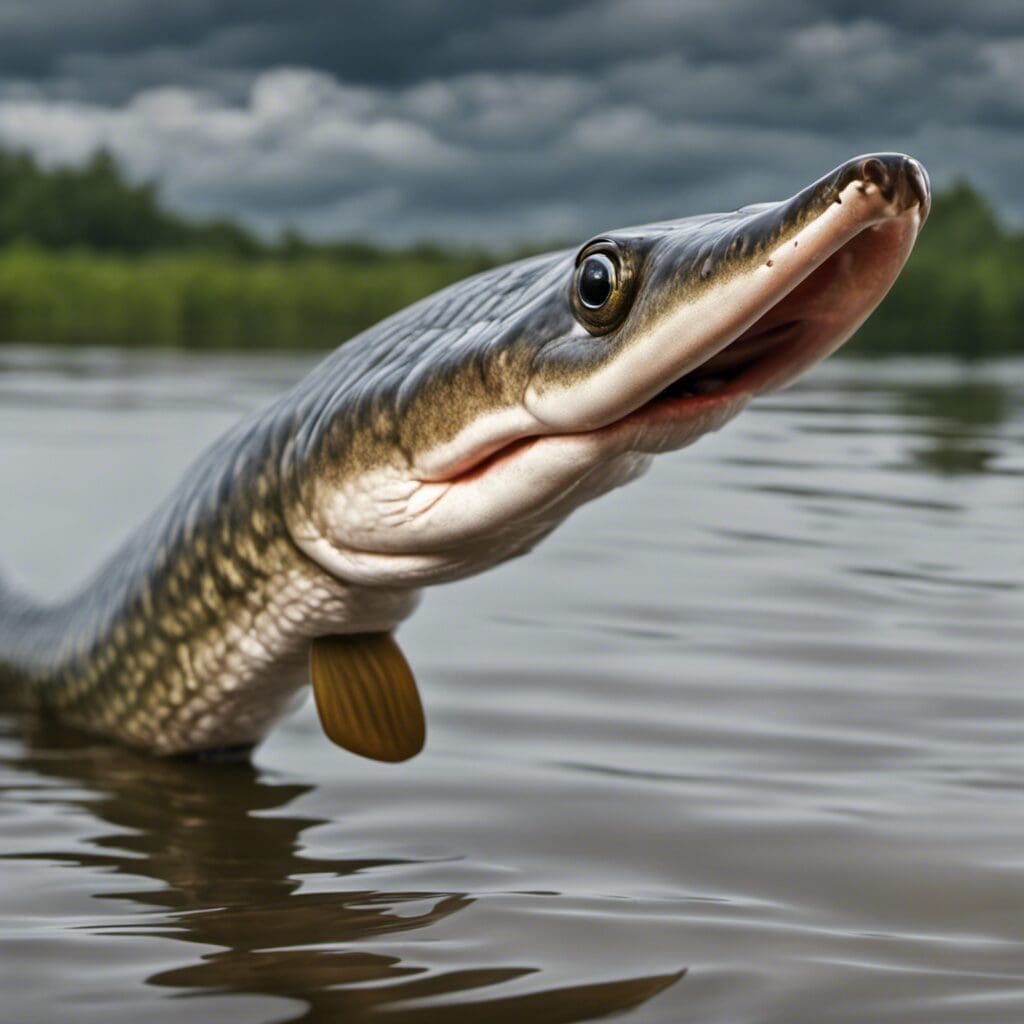Introduction
The Longnose Gar, scientifically known as Lepisosteus osseus, is a primitive freshwater fish of the Lepisosteidae family.
Conservation Status
As per the International Union for Conservation of Nature, the Longnose Gar is classified as being a species of Least Concern. Thus, they are not currently threatened, but this does not negate the need for their conservation. Established conservation efforts include maintaining the health of freshwater ecosystems, raising awareness about the species, and monitoring their population numbers.
Statistics
The following table summarises the key statistics for the Longnose Gar:
| Length (Average) | Length (Range) | Weight (Average) | Weight (Range) | Average Lifespan |
|---|---|---|---|---|
| 30-48 inches | 2-5 feet | 8.5 lbs | 2-15 lbs | 15-20 years |
Distribution
The Longnose Gar is native to many regions of North America. Its distribution ranges from southern Quebec to the northern parts of Mexico, west to southern Saskatchewan and Montana, and east to Vermont and Florida. This species generally doesn’t migrate, but it does tend to move within rivers to find spawning sites.
Habitats
Longnose Gar can be found in various water types including freshwater lakes, rivers, and brackish waters along coastal regions. They are commonly found at depths of 1-9 m, preferring relatively warmer water temperatures.
When and Where to See
Longnose Gar are most active in the warmer seasons, notably from April to October. They are often observed surfacing to breathe air during the day, especially in the afternoon when water temperatures are highest.
Best Fishing Locations
Popular areas for fishing Longnose Gar include the Mississippi River, Great Lakes, Ohio River System, Gulf of Mexico, and the river systems of Missouri and Arkansas. If a specific location is unknown, one can usually find the species in areas of slow-moving or standing water with an abundance of vegetation.
How to Catch
Rope lures and small pieces of fish are effective baits for catching Longnose Gar. Fishing techniques include fly fishing and trolling. They are usually easier to catch at night and during the spawning season which is from late spring to early summer.
Identification Guide
Longnose Gar are characterised by their long, narrow snouts and diamond-shaped, thick scales. They exhibit an olive-brown colour on the back and upper sides with a white or yellowish belly.
Culinary
Longnose Gar can be grilled, smoked, or pan-seared. They have a mild, sweet flavor and a firm, white flesh. However, one should be cautious of the fish’s many small bones when preparing a meal.
Additional Information
Feeding habits of the Longnose Gar include preying on fish, crustaceans, and insects. This species has few natural predators due to its tough scales, but it faces human-induced threats like water pollution and habitat destruction.
References and Further Reading
For more information, you may wish to read articles such as those available on the Florida Museum website or from FishBase

